Related Research Articles

Leprosy, also known as Hansen's disease (HD), is a long-term infection by the bacteria Mycobacterium leprae or Mycobacterium lepromatosis. Infection can lead to damage of the nerves, respiratory tract, skin, and eyes. This nerve damage may result in a lack of ability to feel pain, which can lead to the loss of parts of a person's extremities from repeated injuries or infection due to unnoticed wounds. An infected person may also experience muscle weakness and poor eyesight. Leprosy symptoms may begin within one year, but, for some people, symptoms may take 20 years or more to occur.

Gerhard Henrik Armauer Hansen was a Norwegian physician, remembered for his identification of the bacterium Mycobacterium leprae in 1873 as the causative agent of leprosy. His distinguished work was recognized at the International Leprosy Congress held at Bergen in 1909.
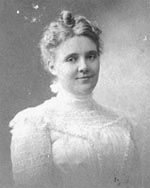
Dr. Ida Sophia Scudder was a third-generation American medical missionary in India. She dedicated her life to the plight of Indian women and the fight against bubonic plague, cholera and leprosy. In 1918, she started one of Asia's foremost teaching hospitals, the Christian Medical College & Hospital, Vellore, India.
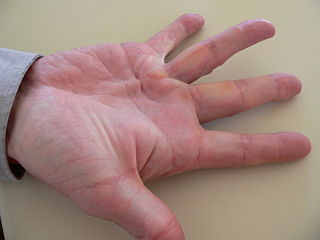
Dupuytren's contracture is a condition in which one or more fingers become permanently bent in a flexed position. It is named after Guillaume Dupuytren, who first described the underlying mechanism of action, followed by the first successful operation in 1831 and publication of the results in The Lancet in 1834. It usually begins as small, hard nodules just under the skin of the palm, then worsens over time until the fingers can no longer be straightened. While typically not painful, some aching or itching may be present. The ring finger followed by the little and middle fingers are most commonly affected. The condition can interfere with activities such as preparing food and writing.
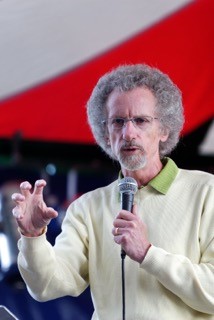
Philip Yancey is an American author who writes primarily about spiritual issues. His books have sold more than fifteen million copies in English and have been translated into forty languages, making him one of the best-selling contemporary Christian authors. Two of his books have won the ECPA's Christian Book of the Year Award: The Jesus I Never Knew in 1996, and What's So Amazing About Grace? in 1998. He is published by Hachette, HarperCollins Christian Publishing, InterVarsity Press, and Penguin Random House.

Christian Medical College, Vellore, widely known as CMC, Vellore, is a private, Christian community-run medical school, hospital and research institute. This Institute includes a network of primary, secondary and tertiary care hospitals in and around Vellore, Tamil Nadu, India.
Dr. Hariharan Srinivasan was an Indian orthopedic surgeon who worked primarily with leprosy. He retired in 2008. He wrote under the pen name Charvakan in Tamil.

Swami Vivekanand National Institute of Rehabilitation Training and Research is an autonomous institute functioning under the Ministry of Social Justice and Empowerment of India. It is located in Olatpur, 30 km from Cuttack.
Leprosy stigma is a type of social stigma, a strong negative feeling towards a person with leprosy relating to their moral status in society. It is also referred to as leprosy-related stigma, leprostigma, and stigma of leprosy. Since ancient times leprosy instilled the practice of fear and avoidance in many societies because of the associated physical disfigurement and lack of understanding behind its cause. Because of the historical trauma the word "leprosy" invokes, the disease is now referred to as Hansen's disease, named after Gerhard Armauer Hansen who discovered Mycobacterium leprae, the bacterial agent that causes Hansen's disease. Those who have suffered from Hansen's disease describe the impact of social stigma as far worse than the physical manifestations despite it being only mildly contagious and pharmacologically curable. This sentiment is echoed by Weis and Ramakrishna, who noted that "the impact of the meaning of the disease may be a greater source of suffering than symptoms of the disease".

Jesus cleansing a leper is one of the miracles of Jesus. The story is found in all three of the Synoptic Gospels: Matthew 8:1–4, Mark 1:40–45 and Luke 5:12–16.
Guy Henry Faget (1891–1947) was an American doctor who revolutionalized the treatment of leprosy, by demonstrating the efficacy of promin, as described in a paper published in 1943. Promin is a sulfone compound, synthesized by Feldman and his co-workers in 1940, which is a chemotherapeutic agent that was determined to be effective against tuberculosis in experimental animals. He was the grandson of Jean Charles Faget, and father of Maxime Faget.

Although leprosy, or Hansen's Disease, was never an epidemic in The United States, cases of leprosy have been reported in Louisiana as early as the 18th century. The first leprosarium in the continental United States existed in Carville, Louisiana from 1894-1999 and Baton Rouge, Louisiana is the home of the only institution in the United States that is exclusively devoted to leprosy consulting, research, and training.
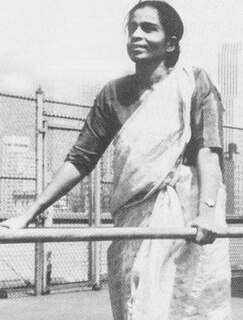
Mary Puthisseril Verghese (1925–1986) was a physician in India who was among the earliest pioneers of Physical medicine and rehabilitation in the country. Mary Verghese was instilled in a home where love and respect were two main factors in their close knit family. She was caring of others and wanted to give back to her community in any way that she could. In 1963, she took charge of what was the first department of Physical Medicine and Rehabilitation with an inpatient facility in India at the Christian Medical College, Vellore. She was instrumental in expanding the services of the department with the establishment of the first inpatient rehabilitation institute of the country in 1966. In recognition of her contributions to the field of medicine, she was awarded the Padma Shri by the Government of India in 1972.

MORHAN or Movement of Reintegration of Persons Afflicted by Hansen's disease in English, is a non-profit organization that operates to reduce leprosy and the stigma of leprosy in Brazil. This organization was initially created to ensure the rights of patients from leper colonies due to their isolation, and today it is one of the most successful Brazilian social movements, with representation in the National Health Council. The group has used several methods to disseminate information about leprosy including, but not limited to, handing out pamphlets, hosting seminars, and organizing puppet shows for children. Morhan also creates its own publications as a means of mobilization and news regarding leprosy. Furthermore, Morhan has worked with anthropologists to provide explanatory models and lay explanations of leprosy within the Brazilian context. Morhan's work has been exemplary in creating partnerships between social groups and the government and received an award from the United Nation’s Millennium Development Goals. The current National Coordinator is Artur Custodio Moreira de Souza.
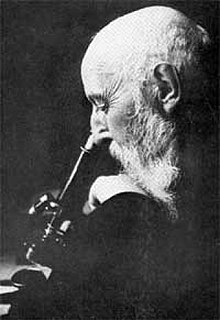
The history of leprosy was traced to its origins by an international team of 22 geneticists using comparative genomics of the worldwide distribution of Mycobacterium leprae. Monot et al. (2005) determined that leprosy originated in East Africa or the Near East and traveled with humans along their migration routes, including those of trade in goods and slaves. The four strains of M. leprae are based in specific geographic regions where each predominantly occurs:
Noshir Hormasji Antia (1922–2007) was an Indian plastic surgeon and social worker, known for his pioneering contributions to the treatment and rehabilitation of people afflicted with leprosy. He was the founder of three notable non governmental organizations, Foundation for Research in Community Health (FRCH), Foundation for Medical Research (FMR) and the National Society for Equal Opportunities for the Handicapped (NASEOH), all working in the field of rehabilitation of patients, cured or otherwise. The Government of India awarded him the fourth highest civilian award of Padma Shri in 1990.
Sharad Moreshwar Hardikar is an Indian orthopedic surgeon and the founder of Hardikar Hospital, Pune. He also heads the hospital's charitable trust, the Sushrut Medical Care and Research Society. Hardikar, an honorary fellow of the British Orthopaedic Association, was awarded the fourth highest civilian honour of the Padma Shri, in 2014, by the Government of India.
Jal Minocher Mehta was a Parsi Indian surgeon, social worker and philanthropist, known for his services for the rehabilitation of people afflicted with leprosy. He was the president of Pune District Leprosy Committee and was involved in organizing self help groups of the leprosy patients and in creating social awareness about the disease through documentaries. He chaired the Serum Institute of India (SIIL) and sat in the Advisory Boards of Pharmabiz, Chronicle Pharmabiz and the Vienna Karl Landsteiner Institute. His efforts towards the Leprosy eradication program included the management of a Leprosy Hospital and a Rehabilitation Centre in Pune. The Government of India awarded him the third highest civilian honour of the Padma Bhushan, in 1982, for his contributions to medical science. He died on 13 October 2001, succumbing to a cerebral hemorrhage at Pune, survived by his wife, Mehru, a medical doctor and cancer surgeon; their only son, Minoo, had predeceased Jal Mehta, caught in an avalanche in the Himalayas earlier.

Dr Ernest Woodward Price MD, FRCSE, DTM&H, OBE was a missionary doctor, orthopaedic surgeon, leprosy specialist and the discoverer of podoconiosis, one of the neglected tropical diseases. A list of his publications is available online.
John Kingdon Guy Webb was an English paediatrician and first-class cricketer. After attending the University of Oxford, where he played first-class cricket, Webb became a paediatrician who spent eighteen years at the Christian Medical College in Vellore, Tamil Nadu and was instrumental in helping set up a paediatric medical structure in the country.
References
- 1 2 3 Anderson, Gerald H. (1999). "Biography of Paul Wilson Brand". Biographical Dictionary of Christian Missions. Wm. B. Eerdmans Publishing. p. 86. ISBN 978-0-8028-4680-8.
- 1 2 "Dr Paul Wilson Brand – 1914–2003, An Extraordinary, Gifted Orthopaedic Surgeon who Straightened Crooked Hands and Unravelled the Riddle of Leprosy". The Leprosy Mission – northern Ireland. 2006. Archived from the original on 1 August 2008. Retrieved 19 September 2008.
- ↑ Koop, C. Everett. "Foreword". Pain: The Gift Nobody Wants.